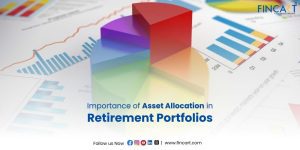Retirement planning is generally divided into two parts: The first is the journey of building your retirement savings while you’re still working. This is the accumulation stage. The second is figuring out how to use those savings to generate an income to support your lifestyle once you retire. This stage is known as income generation. If you are nearing retirement age or just curious about how to make your money last after you stop working, it’s important to understand retirement income strategies. These refer to the part of financial planning that helps convert your savings into a steady stream of income during your retirement years, so you can pay your bills, handle emergencies, and enjoy financial freedom without feeling like a burden.
What Are Retirement Income Strategies?
One needs post-retirement income to keep up with the expenses and support their lifestyle during their golden years. A retirement income strategy is a method that helps you generate this regular income from the savings and investments you built during your working years. These retirement income strategies combine different sources of income, like FD interest, dividends from stocks, rent, and withdrawals from mutual funds and NPS, into a balanced plan.
Why You Need a Retirement Income Strategy
1. To Meet Daily Living Expenses
Planning for an income after retirement is a necessity.
Bills don’t stop. Your regular household expenses will continue plus any hobbies or new costs that come with age. To meet these expenses comfortably, you’ll need a reliable income stream, which is why having an effective income strategy for retirement is essential.
2. To Be Financially Free
Being self-reliant is something we all strive for. A well-executed retirement plan will ensure you remain financially independent in your golden years and don’t have to depend on your children or relatives to cover your expenses.
3. Rising Medical Expenses
Healthcare costs are increasing year by year, and as you grow older, you’ll need more check-ups and treatments. The best retirement income strategy takes these costs into account and ensures that you’re financially prepared to handle them without stress.
4. Protection From Inflation
As time passes, the purchasing power of your money goes down due to inflation. You must invest in options that not only preserve your savings but also grow them over time to keep up with rising costs.
5. Higher Life Expectancy
People today are living longer than ever thanks to advancements in healthcare technology and better living conditions. This also implies that your retirement funds need to last longer. A good strategy will ensure you don’t have to worry about running out of money in your later years.
7 Retirement Income Strategies to Consider
Let’s check out 7 retirement income strategies that can help you generate a steady stream:
1. Systematic Withdrawal Plans (SWPs)
An SWP is a way of withdrawing a fixed sum at regular intervals from mutual fund investments. Through an SIP (Systematic Investment Plan) you buy a fund’s units at the prevailing NAV. SWP works in the exact opposite way. If you already hold a fund’s units, an SWP will allow you to withdraw your money at your convenience.
You can select the withdrawal amount and frequency (monthly, quarterly, etc.) that suits your budget, and enjoy regular, predictable income from your investments without having to sell off your units all at once. And your remaining units? They continue to stay invested and you get to keep benefiting from the compounding effect, making SWPs a great choice for long-term retirement planning.
Here’s an example to understand SWPs better. Suppose you invested Rs. 25 lakh in a mutual fund over your working years, and now you decide to set up an SWP to generate monthly income. Let’s say you choose to withdraw Rs. 25,000 every month. A specific number of units will be redeemed each month depending on the current NAV, and your remaining balance will stay invested. Each month, you’ll receive Rs. 25,000, while the remaining balance will fluctuate based on the performance of the fund.
Mutual funds are among the best ways to build a retirement corpus, and SWPs allow for flexible withdrawals for your post-retirement income needs. A mutual fund investment planner can help you select the right funds based on your risk tolerance, retirement age, and income requirements.
2. Annuities
Annuities are offered by life insurance companies and are among the best retirement income strategies. Through them, you can invest a lump sum (or in some cases premiums) and get a fixed income for a predetermined period of life. Unlike SWPs, these are not market-linked instruments, so they don’t carry any risk that comes with investing and provide you with a guaranteed income. However, less risk also means lower returns.
There are broadly two types of annuities you can choose from:
- Immediate Annuities: These start providing regular income right after a lump sum payment, which makes them suitable for those looking to begin receiving income immediately after retirement.
- Deferred Annuities: With deferred annuities, you make a lump sum payment but the income begins at a later date. They allow your investment to grow before payouts start. Deferred annuities are also classified into two types – variable and fixed annuities. The former is linked to investment options, so the income you receive will depend on the performance of the underlying assets. The latter provides guaranteed, predictable income at a fixed rate.
3. Government Securities (G-secs)
G-secs refer to the debt instruments issued by the Indian Government, like long- and short-term bonds, treasury bills, and state development loans. Unlike other bonds, like the ones offered by corporations, G-secs are free of credit risk as they are backed by the sovereign. So while their returns may be slightly lower compared to other debt instruments they offer a high level of security.
Once you purchase government bonds, you are paid periodic interest (usually semi-annually or annually) at a fixed rate. At the end of the bond’s tenure, the principal amount is repaid to you. What’s more, is that you can sell these bonds in the market before maturity if you need liquidity. You should, however, keep in mind that these securities still carry interest rate risk. So while you will be paid the full interest and principal if you hold the bond till maturity, selling it prematurely could result in a capital gain or loss, depending on prevailing interest rates. If market interest rates rise after you buy the bond, its resale value will fall, and vice versa.
4. Rental Income
For a long time, individuals have used real estate to generate a passive income. Although it does require a substantial investment first, rent can be a reliable source as it tends to grow with inflation and demand, thus helping protect your money’s purchasing power. Real estate also benefits from capital appreciation so your property’s value can increase over the years and provide a lump sum gain if you decide to sell.
That said, it’s important to remember that real estate isn’t totally passive. You’ll still need to manage tenants, maintain the property, and complete property-related paperwork from time to time. You also need to take care of expenses like property tax, insurance, maintenance costs, and occasional repairs, all of which can eat into your rental income. There’s also the question of whether you should buy a property to support your retirement income or is the money better invested elsewhere.
Consulting with an investment service can help you assess the potential returns of real estate depending on your preferred cities and historical trends versus other investment options. Experts can guide you on whether real estate aligns with your long-term retirement goals, or if other income-generating investments, like mutual funds or bonds, would be more suitable for your financial situation.
5. Dividend-paying Stocks
If you’ve created a diversified portfolio consisting of blue chip stocks and other well-established companies, dividend-paying stocks can give you an income stream during retirement. These companies distribute a portion of their profits to shareholders in the form of dividends, the frequency of which varies from company to company.
This option is only suitable for investors with a high-risk tolerance. Stock prices can fluctuate, and the dividend payout may not be guaranteed. Generally, risk tolerance reduces with age, which is why it is often recommended to shift a portion of your investments to more stable, income-generating assets like bonds or fixed deposits.
6. Government Schemes
The Government has launched many schemes aimed at retirement planning and senior citizens. Here are two of the most popular ones:
a. Senior Citizen Savings Scheme
Individuals above the age of 60 can invest in SCSS and earn a regular income through attractive interest payments which are revised quarterly. As of the first quarter of the financial year 2025/26, the interest rate on SCSS is 8.2%. Here are some features of SCSS:
- The lock-in period is 5 years, which can be extended further by 3 years.
- The account can be opened at an authorised bank or post office.
- The minimum investment required is Rs. 1,000, whereas a maximum of Rs. 30 lakh can be invested.
- Offers tax deductions up to Rs. 1.5 lakh under Section 80C.
- Interest earned is taxable and subject to TDS.
b. National Pension System
The NPS is designed to help individuals support themselves after retirement. It allows you to invest in your working years and upon retirement, provides you 60% of the accumulated corpus. The remaining 40% must be used to purchase an annuity, which will provide a regular monthly pension for life. Some features of NPS are:
- Investments are made in market-linked instruments.
- You can choose between auto choice or active asset allocation. The latter can be used to adjust the proportion of equity, corporate bonds, and government securities according to your preference and risk tolerance.
- Low fund management fees.
- Contributions qualify for deductions under Section 80C and also an additional deduction of up to Rs. 50,000 under Section 80CCD(1B).
7. Fixed Deposits
Offered by banks and NBFCs, FDs promise guaranteed returns for a predetermined period. Since FD returns are not influenced by the market, conservative investors over the years have relied on them for capital preservation and income, especially during retirement. For senior citizens, most banks offer higher interest rates (somewhere around 0.25% to 0.50% above regular rates), and you can choose interest payouts on a monthly, quarterly, or annual basis.
While withdrawing prematurely is possible, you may be subjected to fines. That’s why FDs are not the most liquid option. Fixed deposits by non-banking financial companies offer slightly higher returns, however, they also come with a bit more risk.
Investors should also be aware of the tax implications of FDs. Not only is the interest earned fully taxable, but if it exceeds a certain amount a financial year it also attracts TDS.
How to Build a Retirement Income Portfolio
- Calculate how much money you’ll need for retirement: The first step in building a retirement income portfolio is to assess your future needs, the kind of lifestyle you want, where you want to live, and the expected cost of living in that location. Also important to account for your regular expenses (like groceries, utility bills, and rent), future healthcare costs, and inflation. Since this step is so important, guidance from an expert investment planner can be invaluable.
- Assess your risk tolerance: How much risk you can take depends on factors such as your age, health condition, debts, dependents, financial obligations, and financial goals. Generally speaking, the closer you are to retirement (or if you’re already retired) the lower your risk appetite should be as you have less time to recover from market fluctuations.
- Diversify your investments: Build a diversified portfolio across asset classes and include a mix of low-risk options like SCSS and FDs and moderate-risk vehicles like SWPs and dividend-paying stocks. The asset allocation would depend on your goals and risk appetite.
- Review your portfolio: Every six months or so you should review how your portfolio is doing and how the asset allocation has changed. Make the necessary adjustments to protect your portfolio from risks.
This is a very general outline of things you should consider when building a retirement portfolio. There are a number of investment options available with their own pros and cons. What works for one person may not suit you which is why it’s important to build a plan that reflects your needs. A retirement planner can help you understand these options in detail and recommend the right mix based on your income needs, goals, and comfort with risk. They’ll also help you factor in taxes, inflation, and how to make your money last through 25 to 30 years of retirement.
Choosing the Best Retirement Income Strategy for Your Goals
There are no best retirement income Strategies that suits everyone as financial goals, preferences, obligations, and risk tolerances differ from one person to another. A person starting their retirement planning in their 20s will take a very different approach from someone who is just a few years away from retirement.
This applies after retirement as well. For example, someone who started early and has built a large corpus would likely be comfortable keeping a portion of their funds in equity for higher income generation, through options like dividend-paying stocks or an sip investment plan in equity funds.
They can afford to take slightly higher risks to earn more because their basic expenses are already covered. On the other hand, someone with a smaller retirement corpus or who started late would need to prioritise guaranteed income and capital preservation, so their retirement income strategy could lean more towards annuities, Senior Citizen Saving Scheme, and FDs.
Mistakes to Avoid While Planning Your Retirement Income
Your income strategy for retirement should consider not only how much income you’ll receive but also how sustainable and tax-efficient it will be over the long term. Many people, despite having amassed a decent retirement corpus, face challenges because of poor planning. Here are some common mistakes to avoid:
- Not accounting for inflation: Inflation reduces the present value of your money. Medical inflation also tends to rise at a faster pace than general inflation. You must ensure your investments during the accumulation stage generate inflation-beating returns.
- Relying on a single income source: After you’ve retired, make sure to diversify your sources of income to reduce risk.
- Not starting early: It is never too soon to get started on retirement planning. The best time to begin is as soon as you start earning as that allows your money to take maximum advantage of compounding interest and also allows you to invest in riskier options that offer much higher returns.
- Ignoring tax planning: A solid tax plan can help you save more during your working years and also lets you retain more of your income post-retirement. Many retirees don’t account for the tax implications of their investments, so taxes eat into their returns. Meeting with a tax consultant can help you make tax-efficient choices.
- Not building an emergency fund: Creating a fund for emergencies during your working years can help you manage unexpected costs that arise from time to time, and prevent you from prematurely liquidating your investments and taking debt.
Conclusion: Start Early, Stay Prepared
Well-planned retirement income strategies help you generate a reliable income in your golden years. The best time to begin planning for retirement is as soon as you start earning as you give your investments more time to grow through compounding, and you also have the flexibility to take a bit more risk. Start your retirement planning journey with our qualified advisors today!




